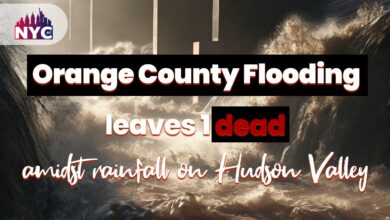New Direct Train Service to Great New York State Fair – All You Need to Know

Great New York State Fair
Summer and the Great New York State Fair are just around the corner! Therefore, This year, there’s an exciting development for fairgoers: a direct train service to take you straight to the heart of all the action. Hence, No more worrying about parking or battling traffic. So, now you can sit back, relax, and enjoy a stress-free journey to one of America’s most beloved state fairs.
Hence, Learn more about this exciting new offering and prepare for an unforgettable summer adventure! Therefore, no need to worry about public transport in NYC.
What is the Great New York State Fair?
The Great New York State Fair is an annual event in Syracuse, New York. It’s been a beloved tradition since its inception in 1841 and has grown to become one of the largest state fairs in the country. The fair showcases everything from agriculture and livestock exhibits to:
- live music performances,
- carnival rides,
- And delicious food vendors.
One of the unique features of the Great New York State Fair is its focus on highlighting local businesses and products. Visitors can sample a variety of foods made with ingredients sourced from local farms or browse vendors selling handmade crafts and goods produced by Central New Yorkers.
In addition to all the exciting activities happening at the fairgrounds during its two-week run, there are also special events like:
- fireworks displays,
- parades,
- and competitions for visitors to enjoy.
The Great New York State Fair is a celebration of all things uniquely New York- showcasing our:
- rich history,
- culture,
- and traditions
Moreover, it is also a step toward bringing together communities.
When is the Great New York State Fair?
The Great New York State Fair is an annual event in Syracuse, New York. It runs for 13 days and attracts over a million visitors annually. This year, the fair will be held from Wednesday, August 23, through Monday, September 4.
Moreover, There will also be a new Asian Village joining the Indian, Pan African, and Latino Villages at the fair, along with rides and the usual state fair trappings (food vendors, thrill rides, and competitions). Through music, dance, food, and other special events, the festival will celebrate the contributions, history, and experiences of Asian American, Native Hawaiian, and Pacific Islander communities.
Furthermore, Some of the famous artists will perform this year are:
- Rebecca Black,
- Theory of a Dead Man,
- Doechii,
- Gayle,
- Julio Iglesias Jr.,
- Herman’s Hermits starring Peter Noone,
- REO Speedwagon,
- Ludacris,
- The Fray,
- And Yung Gravy featuring bbno$.
New Direct Train Service
In addition, the news of the day; was a new direct train service to the Great New York state fair.
This will let you skip tolls, traffic, and parking fees and save on gas.
Hence, Amtrak invites you to take a stress-free trip to Syracuse’s New York State Fair this August and September. Furthermore, Five daily trains, including Empire Service and Maple Leaf, will stop at the fair from Wednesday, August 23, through Monday, September 4.
Hence, With departure times ranging from 7:16 am to 1:20 pm, you’ll easily get to the fairgrounds without having to drive. Furthermore, The Amtrak stop is conveniently located near the fairgrounds, adjacent to the Suburban Park concert area.
Here is the schedule of the trains:
- Maple Leaf Train 63: Departs Moynihan Train Hall at 7:16 am and arrives at the fair at 1:09 pm
- Empire Service Train 281: Departs New York Penn Station at 10:21 am and arrives at the fair at 4:17 pm
- Empire Service Train 283: Departs New York Penn Station at 1:20 pm and arrives at the fair at 7:06 pm
Tickets
Furthermore, The tickets are available now at Amtrak.com, via the Amtrak mobile app, at station ticket counters, or by calling 1-800-USA-RAIL. Moreover, The fair is $6 for adults, $6 for children 12 and under, and free for seniors 65 and over.
Conclusion
Hence, The Great New York State Fair is a must-visit event for anyone looking to experience what New York offers. Fortunately, with direct train service available this year, getting there has never been easier or more convenient.
Hence, we hope you found this article informative and helpful in planning your trip to the Great New York State Fair.
So, See you at the fairgrounds!



